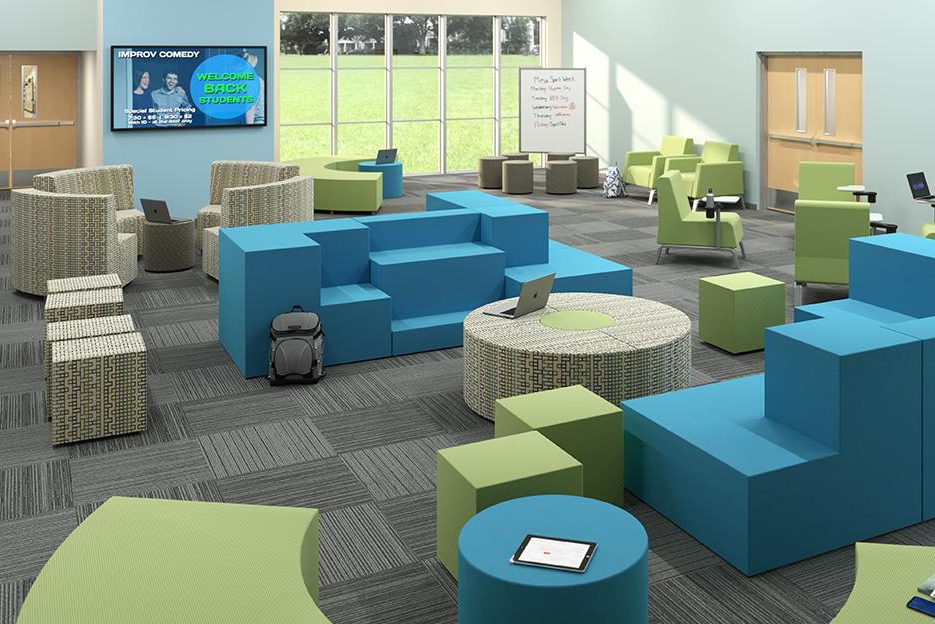Project Praxeum: Our Journey of Education Transformation

For the purpose of this discussion, we’ll build on the idea that the role of education in the 21st century is to cultivate a capacity for lifelong learning within resilient individuals so they are prepared to productively engage with an ever-changing world. Given that the current construct of education has been likened to a machine that makes sausage (Sir Ken Robinson), educators must be given space to exercise new methodologies that leverage the uniqueness of each student and tremendous power of dynamic technologies.
Praxeum is that space which represents both the tangible and philosophical ideas that transform education to meet the latest demands of global industry, evolving infrastructure, and competitive military strategy. With a vision to revolutionize education and curriculum development through technological innovation, this ecosystem erases limits in order to make possible any learning experience imaginable. Much can be said about the rich meaning of the term “Praxeum” and the impressive array of novel technologies that enable authentic engagement and empower competency-based curriculum through diversified approaches to pedagogy/andragogy. Even just comparing internet image searches for the terms “classroom” and “learning space” illustrate the two different paradigms that exist today (and why terminology matters).
With all of this, the distinction is absolutely clear: where the traditional classroom has generally been known as the space where one must have the single right answer, Praxeum is a classroom of the future that makes space to safely navigate the unknown and exercise a growth mindset as we journey through the transformation of education together. It is the space to wonder about new ideas and to wander freely through new methods of teaching and learning.
4 Phases of the Journey
The approach Praxeum takes to this journey of transforming education can be captured in 4 phases:
Phase 1: Research emerging needs/technologies
Phase 2: Sandbox/Pilot implementation of new technologies
Phase 3: Collect data/feedback on technology usage and user experience
Phase 4: Support/Scale OR Reiterate/Abandon technologies
Working through this cycle, all stakeholders have a voice in what defines successful transformation and what components might contribute to that end. As users integrate these tools/practices in their respective contexts (i.e. specific use cases, cohorts, etc.), a transparent set of data tells the story of how education is being impacted. This provides guidance on if/how further training/implementation should take place.
A Map for the Journey
As a guide for this journey, we can reference the “SAMR Model” (developed by Dr R. Puentedura) which gives an honest measure on how technology is impacting the learning experiences we are experimenting with.

Although not hierarchical, “Substitution”/”Augmentation” represents a minimal gain from the integration of technology through a simple replacement of an older process/technology. Examples include disseminating information via an eBook/digital PDF that was originally sourced from the hardcopy of a physical book or else replacing overhead projectors with interactive whiteboards. Further along the spectrum, “Modification”/”Redefinition” represents learning experiences that are more significantly altered/completely brand new – not otherwise possible without the applied technologies. Outcomes include more personalized tasks and interactions that extend outside the rigid classroom schedules and walls including discussion forums with experts from other countries and projects/portfolios that involve student artifacts (i.e. original video recordings) of real-world solutions. Although it might only be appropriate to integrate certain technologies at the former levels, the SAMR model is a prompt to inform where to invest in the next steps of our technologies/practices towards making learning experiences the most relevant to the 21st century.
There are similar models that serve this purpose including RAT (Replacement/Amplification/Transformation) and TPACK (Technological Pedagogical and Content Knowledge). One could also explore the parallels between these respective models and Webb’s Depth of Knowledge (while observing they serve two different purposes). In any case, if educators aren’t driven by some sort of instrument that reveals potential for growth, they will fall short of what can fully be accomplished in the future of teaching and learning. And that’s why Praxeum is such an important ingredient to the process.
Implications of the Journey
Combining a community of educators with research-based practices and space that supports experimentation, there are no limits to how we innovate in education. Building on partnerships that diversify and strengthen this process, we collectively grapple with the demand signal coming from the changing world around us and find ways to overcome the barriers within the bureaucracy of educational systems. In order for an educational environment to perform its new function in a relevant manner, it must acknowledge the emerging technologies and 21st century skills that are taking an increasing hold across every industry and then modify curriculum and instructional methods accordingly. Together, the Praxeum community is positioned to serve as a beacon for the network of like-minded people who hold this value tightly while remaining adaptable in every other way – modeling the courage to be lifelong learners and embracing the new frontiers of education.
Welcome to Praxeum.




0 Comments